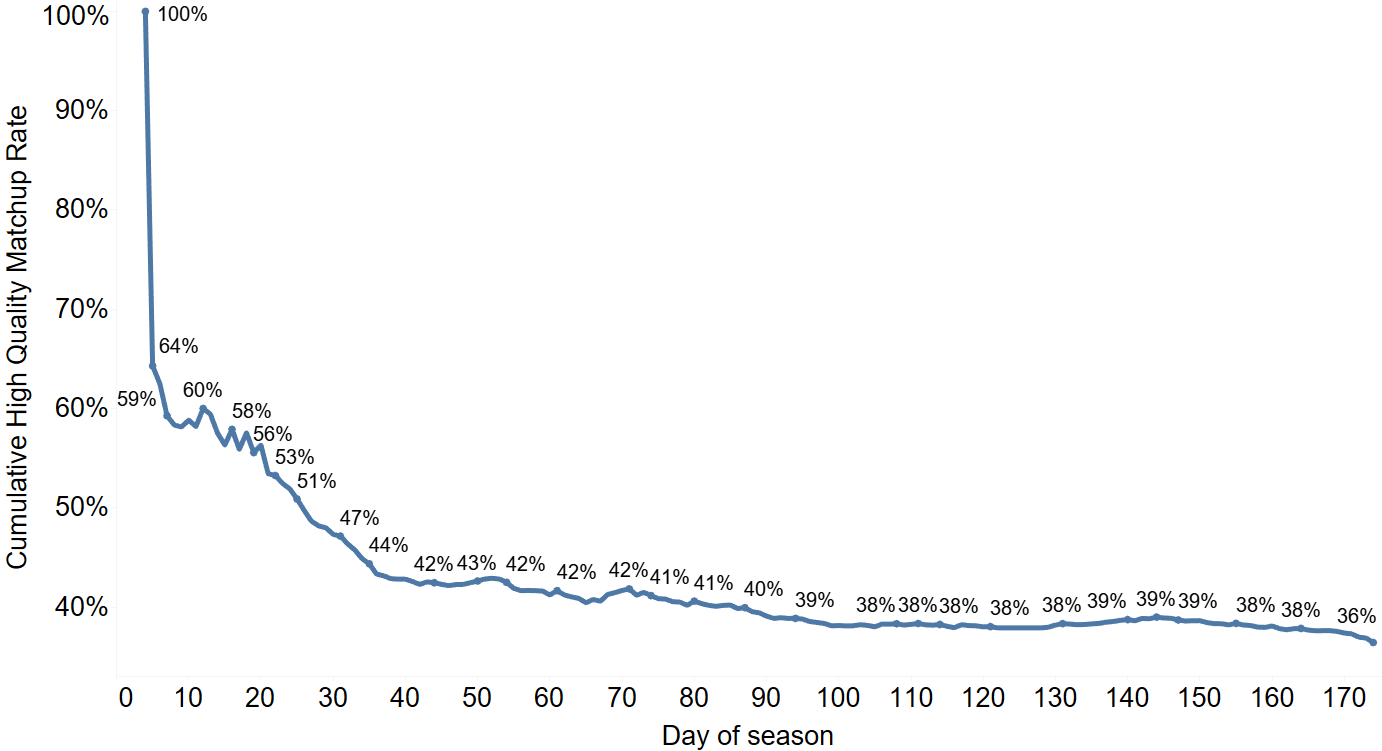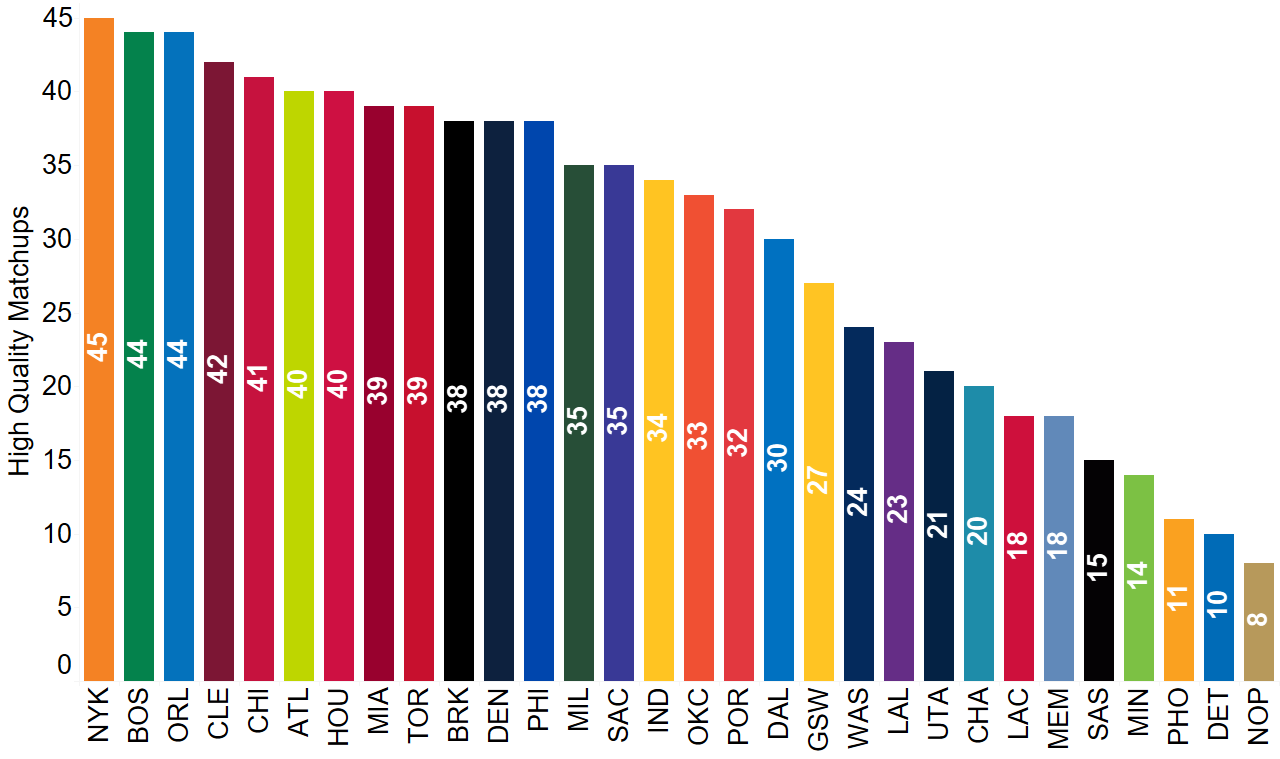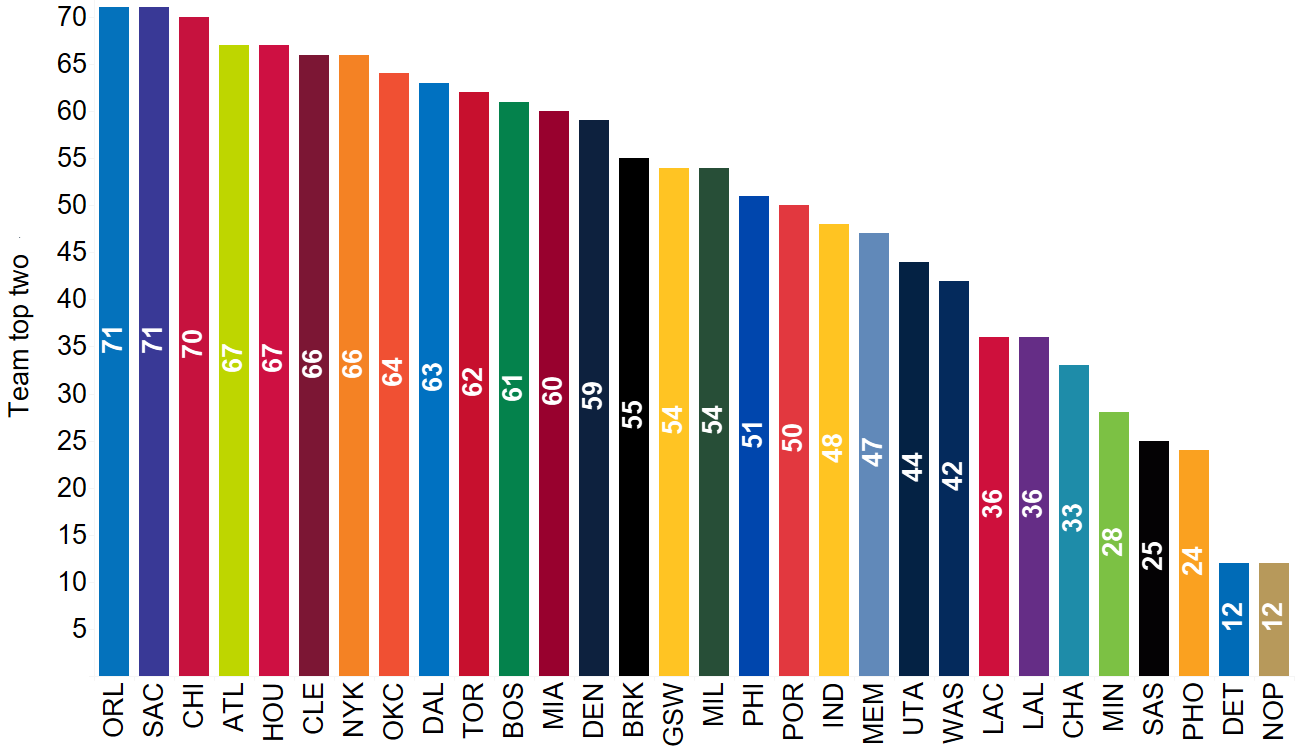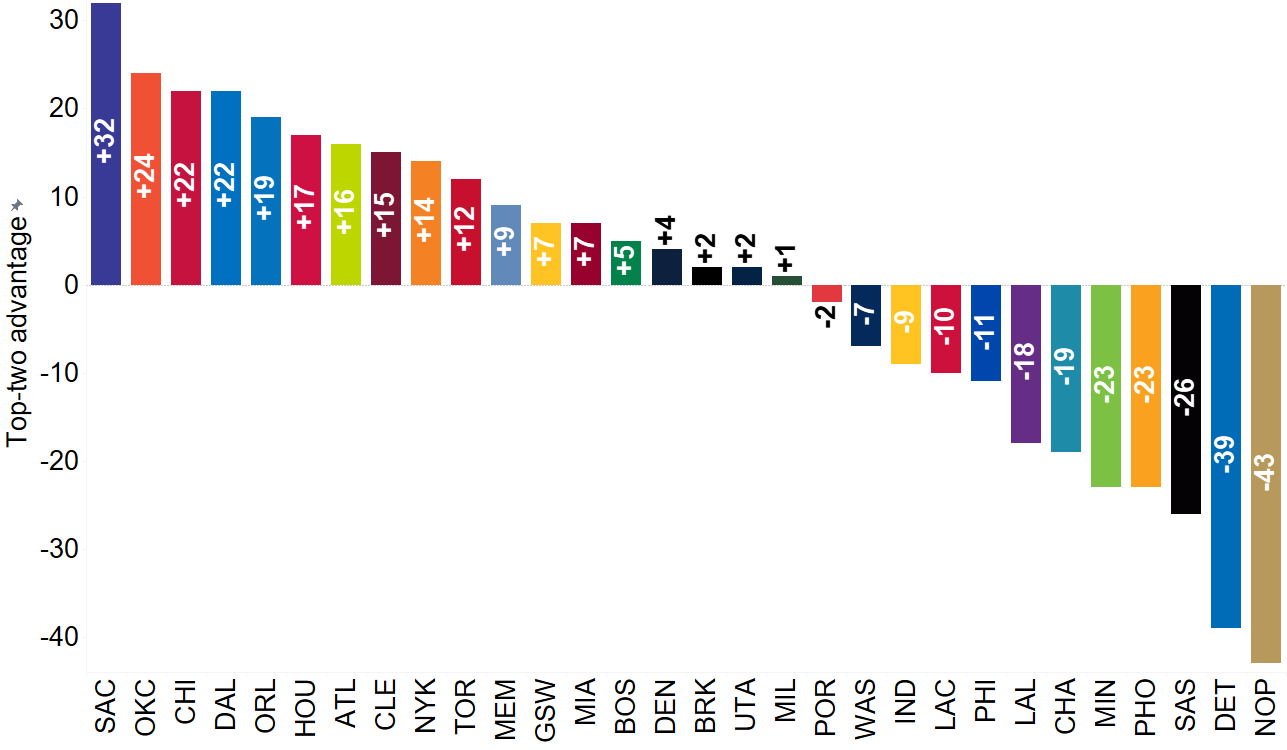Thursday, Jimmy Butler and Bam Adebayo led the Heat over the 76ers. With Philadelphia already locked into the No. 3 seed, Joel Embiid sat the entire fourth quarter and James Harden played even less in the uncompetitive game. Miami led by double digits the final 37 minutes and won by 28.
“We didn’t come to play tonight,” 76ers coach Doc Rivers said. “We had no energy. It was a difficult game to have energy - it was an exercise tonight.”
Yet, that counted as a High Quality Matchup – the last High Quality Matchup of the NBA season – as we tracked how often both teams played their top two players in a game.
Our standard was generous. A tanking team plays its most-prominent young players with a disorganized game plan and minimal chance of competing? That counts. A team on the second night of a back-to-back sleepwalks through a game but while using its best players? That counts. A burgeoning star starts to keep his games-played streak alive but immediately fouls and leaves the game for good? He counts.
Still, the season-long High Quality Matchup Rate: 36%.
Just 36% of games featured both teams' top two players.
How the running High Quality Matchup Rate evolved over the season:

High Quality Matchup Rate by month:
- October 56%
- November 36%
- December 39%
- January 32%
- February 38%
- March 35%
- April 16%
None of the NBA's last 32 games over the final four days of the regular season were High Quality Matchups. As teams focused on tanking for draft position, tanking for postseason position and resting for the postseason, the product on the floor really suffered.
But it's not as if the situation were grand before the final weekend.
Just four teams played a majority of their games as High Quality Matchups: Knicks (45), Celtics (44), Magic (44) and Cavaliers (42). The Pelicans had just eight High Quality Matchups all season!
High Quality Matchups by team:

For the Pelicans, the problem was usually on their own end, with Zion Williamson and Brandon Ingram missing major time to injury. New Orleans had its top two players both available in just 12 games. That was tied for the fewest with the Pistons, who stopped playing High Quality Matchups once Cade Cunningham got hurt.
On the healthy end of the spectrum, the Kings and Magic each used both their top two players 71 times.
Games teams played both their top two players:

Whether an opponent had its top two players was really just luck. That really separates the Kings and Magic. While Orlando's opponents had their top twos available a middling 52 times, Sacramento's opponents had their top twos available just 39 times.
So, the Kings played with Domantas Sabonis and De'Aaron Fox against an opponent missing at least one of its top two a whopping 36 times. The inverse – Sacramento without Sabonis and/or Fox against an opponent with both its top two – happened just four times.That +32 top-two advantage was largest in the league by eight games.
On the flip side, the Pelicans played just four games with both Williamson and Ingram and the opponent missing a top-two player. New Orleans was at a top-two disadvantage 47 times. That -43 disparity is even larger than the Kings' advantage and incredible for a Pelicans team that made the postseason, anyway.
Teams by top-two advantage:

-Dan Feldman